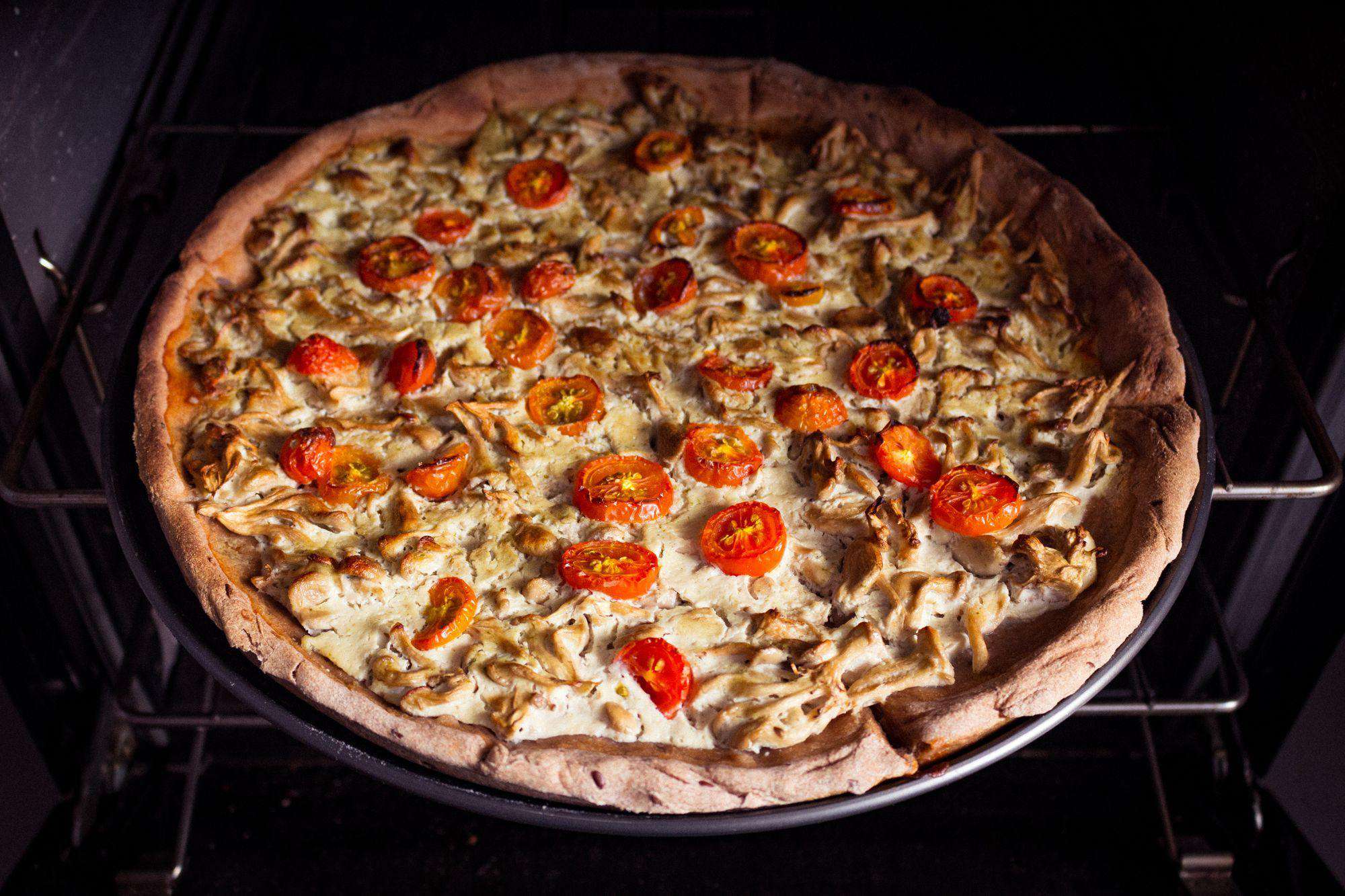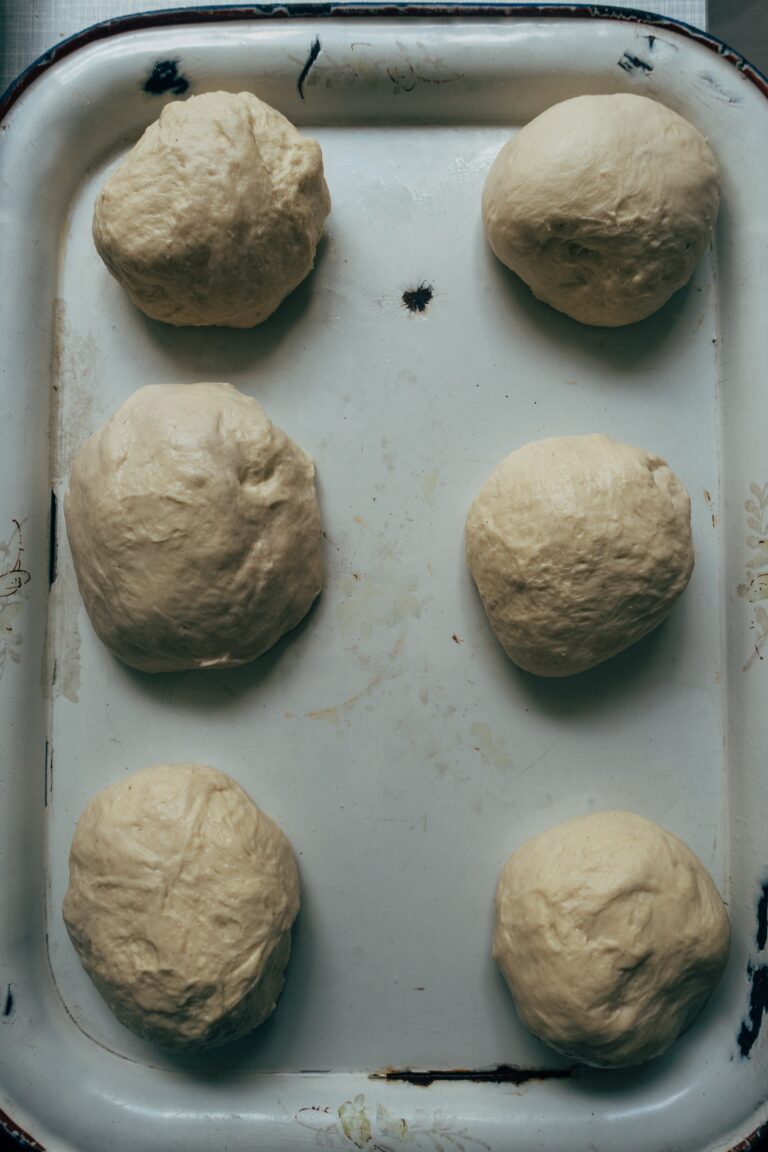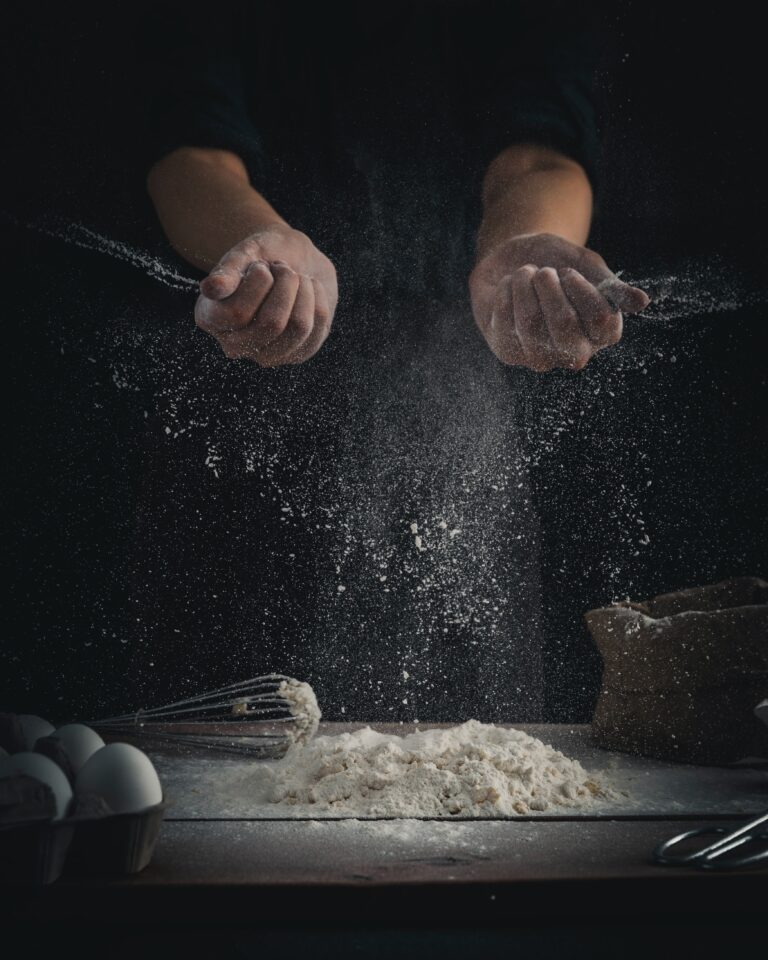Crispy Pizza Crust Recipe
Are you craving a mouthwatering pizza with a crispy crust that will leave you wanting more? Look no further! This article has everything you need to know about making the perfect crispy pizza crust right in the comfort of your kitchen.
We’ll guide you through choosing the suitable flour, incorporating key ingredients, mastering proper dough-kneading techniques, and using baking methods that guarantee a perfectly crunchy crust every time. Get ready to impress your taste buds with this innovative and delicious recipe!
The Importance of a Crispy Pizza Crust
One of the critical factors in getting that ideal crunch is choosing the right oven. A brick or stone oven is your best bet for achieving a beautifully charred crust. These types of ovens distribute heat evenly and have high temperatures that can create that sought-after charred effect.
When it comes to techniques for achieving a charred crust, there are a few options to consider. One popular method is preheating your oven at its highest temperature for at least 30 minutes before baking your pizza. This will help ensure that the crust gets crispy and golden brown.
Another technique to try is using a pizza stone or baking steel. These tools absorb and radiate heat, resulting in a crispier crust. Place the stone or steel on the bottom rack of your oven while preheating, then transfer your prepared pizza onto it for baking.
Finally, don’t forget about proper dough preparation. High-quality flour with a good gluten content will give your dough structure and elasticity, leading to a light and crispy crust when baked.
Choosing the Right Flour for a Crispy Crust
When making a crispy pizza crust, choosing the right type of flour is essential. While traditional all-purpose flour is commonly used, several flour alternatives can enhance the flavor and texture of your crust.
One popular alternative is bread flour, which has a higher protein content than all-purpose flour. When mixed with water, this extra protein creates more gluten, resulting in a chewier and crispier crust.
Another option is using a flour blend, such as combining all-purpose flour with semolina or cornmeal. Semolina adds a slightly sweet and nutty flavor, while cornmeal gives the crust a delightful crunch. Experimenting with different ratios of these flours can help you balance crispiness and taste perfectly.
For those seeking innovation in their pizza crust, some unique alternatives include almond flour or cauliflower rice. Almond flour adds richness and nuttiness to the crust, while cauliflower rice offers a low-carb option that still delivers on taste and texture.
Key Ingredients for Achieving a Crispy Crust
When it comes to achieving a perfectly crispy crust, there are three key points you need to keep in mind:
-
The type of flour you use dramatically impacts the texture and crispiness of your crust.
-
Finding the right balance between baking temperature and time is crucial for achieving that desired golden brown color and crunch.
-
Don’t underestimate the importance of rolling out your dough thin enough – this allows for better heat distribution and ensures a crispy bite every time.
Let’s dive into these critical factors and learn how they can help you create a mouthwatering crispy crust for your next pizza!
Flour Types for Crust
You’ll want to use a combination of all-purpose and bread flour for a crispy pizza crust. These flours have higher protein content, which helps create a chewy yet crisp texture.
However, several options are available today if you’re looking for gluten-free alternatives. Some popular choices include almond flour, rice flour, and tapioca flour. These gluten-free flours can give your crust a unique taste and texture while achieving that desired crispiness.
Regarding yeast vs. no yeast, both options can yield delicious results. Using yeast in your dough allows it to rise and develop flavor over time. This results in a slightly lighter and more airy crust.
On the other hand, making a no-yeast crust can be quicker and easier as it requires less time to rise. The dough is typically thin and crispy when baked.
Experimenting with different types of flours and leavening agents can lead to innovative and exciting variations of your favorite pizza crust recipe. So why not try incorporating gluten-free alternatives or testing yeast and no-yeast versions? Get creative with your ingredients and techniques to consistently achieve the perfect crispy pizza crust!
Baking Temperature and Time
It’s important to bake your pizza at the right temperature and for the correct amount of time to achieve the perfect texture.
Baking techniques are crucial in achieving that golden brown crust we crave. Preheating your oven to a high temperature, around 500°F (260°C), is essential in creating a crispy crust. This high heat helps to quickly cook the dough and create those desirable bubbles and charred spots.
Experimenting with different pizza stone materials can also enhance your baking experience. Traditional ceramic or clay stones are great options, but you can also try using cast iron or even steel for a unique twist on your crust. These materials retain heat well, producing a crispier bottom and improved texture.
Importance of Thinness
The perfect texture starts with rolling out your dough to an even thickness. When it comes to pizza crust, thinness is critical. A thin crust allows for a crispy exterior while maintaining a chewy interior, creating the ultimate pizza experience. Use a rolling pin or stretch the dough gently with your hands to ensure uniformity. Aim for a thickness of around 1/8 inch for that perfect balance between crispiness and chewiness.
To help you visualize the importance of thinness in pizza crust, consider the following table:
| Thickness (in inches) | Texture |
|---|---|
| 1/16 | Paper-thin, extremely crispy |
| 1/8 | Crispy exterior, chewy interior (ideal) |
| 1/4 | Moderately crispy, less chewy |
Remember that achieving a chewy texture doesn’t stop at thinning the dough. The perfect pizza sauce also plays a significant role in enhancing this desired texture. Experiment with different recipes and combinations to find your ideal sauce that complements your fragile and chewy crust.
The Art of Proper Dough Kneading
When it comes to achieving fluffy, light dough for your pizza crust, mastering the art of proper kneading techniques is essential. Using a combination of gentle folding and palm pushes, you can create air pockets in the dough, resulting in a lighter texture when baked.
Additionally, allowing enough time for fermentation is crucial as this allows the yeast to fully develop and release carbon dioxide, further contributing to the fluffiness of your crust.
Lastly, don’t underestimate the importance of gluten development – by kneading your dough until it reaches an elastic and stretchy consistency, you’ll ensure a chewy yet tender bite in every slice.
Kneading Techniques for Fluffiness
Mixing the dough thoroughly is critical to achieving a fluffy pizza crust. Regarding kneading techniques, there are a few innovative ways to ensure that your dough turns out light and airy. Here’s how:
-
Proper Dough Hydration: Add enough water to the flour mixture to form a soft and slightly sticky dough. This will help create air pockets during baking, resulting in a lighter crust.
-
Stretch and Fold Method: Instead of traditional kneading, try gently stretching the dough and folding it over itself several times. This technique helps develop gluten while keeping the dough light.
-
Resting Periods: Allow the dough to rest regularly during the kneading process. This allows gluten strands to relax, making it easier for air bubbles to form.
-
Using a Pizza Stone: Preheat your oven with a pizza stone inside. The hot stone ensures even heat distribution and creates a crispy crust texture.
Time Needed for Fermentation
You’ll need to allow the dough to rest for a specific time to ensure optimal fermentation. The fermentation process is crucial in creating a flavorful and crispy pizza crust. But did you know that the length of fermentation time can vary? This variation can significantly impact the final flavor of your crust.
Longer fermentation times, ranging from 24 to 72 hours, allow the yeast to work magic and develop complex flavors. The result is a crust with hints of tanginess and depth that will leave your taste buds wanting more.
On the other hand, if you’re short on time, a shorter fermentation period of just 6 to 12 hours can still yield delicious results. So experiment with different fermentation times and discover the best flavor profiles that suit your palate.
Importance of Gluten Development
Now that you understand the time needed for fermentation let’s dive into the importance of gluten development in creating a crispy pizza crust.
Gluten is what gives traditional pizza dough its elasticity and chewy texture. However, if you’re looking for gluten-free alternatives or want to experiment with different methods, there are alternative ways to achieve similar results.
One popular gluten-free option combines rice flour, tapioca starch, and potato starch. These ingredients can mimic the texture and structure that gluten provides. Alternative methods for gluten development include adding xanthan gum or psyllium husk powder to bind the dough together.
Baking Techniques for a Perfectly Crispy Crust
You’ll want to preheat your oven to the highest temperature it can reach for a perfectly crispy crust. This will ensure the dough gets heat when it hits the hot surface, creating that desired crunch. However, achieving a flaky crust involves more than just high heat; it also requires the right baking tools and alternative crust options.
Consider investing in a pizza stone or steel to achieve a crispy crust. These baking tools help to evenly distribute heat and absorb moisture from the dough, resulting in a crispier texture. Preheat the stone or steel in the oven before baking your pizza.
If you’re looking for alternative crust options, several innovative choices are available. One option is using cauliflower as a base for your crust. You can create a delicious gluten-free crust that bakes up nice and crispy by finely grating cauliflower and mixing it with eggs and cheese.
Another alternative is using tortillas or flatbreads as your base. These thin and already-baked options provide an easy way to achieve a quick and crispy crust without fuss.
So whether you’re using traditional dough or exploring new alternatives, remember to preheat your oven properly and consider investing in quality baking tools for that perfect crispy pizza crust every time.
Tips for Achieving a Crunchy Crust at Home
If you want to achieve a crunchy crust at home, ensure you preheat your oven properly and consider investing in quality baking tools. Achieving that perfect balance of a crisp outer layer and a soft interior can be challenging. Still, with the proper techniques and equipment, you can create a pizza crust that rivals your favorite pizzeria.
Here are some tips to help you achieve that deliciously crunchy crust:
-
Choose the right oven: Different ovens have different heat distribution capabilities. Look for a range that provides even heat throughout its chamber. This will ensure that your crust bakes evenly and crisps up beautifully.
-
Use a pizza stone for even heat distribution: A pizza stone is essential for achieving a crispy crust. It absorbs moisture from the dough, creating a dry surface that promotes browning. Place the stone in the oven while it preheats to allow it to reach an optimal temperature.
-
Preheat your oven properly: Preheating your oven is crucial for getting that perfect crunch. Make sure to preheat it at least 30 minutes before baking your pizza to allow it to reach the desired temperature. This ensures the dough cooks quickly and evenly, producing a crispy crust.
Delicious Toppings to Complement Your Crispy Crust
When selecting toppings to complement your crunchy crust, consider a combination of savory and fresh ingredients for a burst of flavor. The right topping combinations can take your pizza to new heights, creating a unique culinary experience that will leave your taste buds craving more.
Start by thinking outside the box and experimenting with unique crust flavors. How about a garlic-infused crust topped with tangy goat cheese, caramelized onions, and earthy mushrooms? Or perhaps a pesto-laced crust adorned with juicy cherry tomatoes, creamy mozzarella, and fragrant basil leaves?
Don’t be afraid to mix and match different textures and flavors. For instance, try pairing crispy bacon with sweet pineapple chunks on a thin crust smeared with barbecue sauce for a delightful blend of smoky, sweet, and tangy notes.
If you’re feeling adventurous, go for an Indian-inspired pizza with naan bread as the crust base topped with spicy tikka chicken, cooling raita sauce, vibrant cilantro chutney, and crunchy red onions.
With endless possibilities at your fingertips, let your creativity run wild when it comes to topping combinations that elevate your already delicious, crispy pizza crust.






